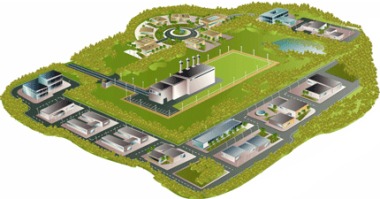Tecnatom and Gas Natural Fenosa have won a contract to provide engineering design support for Spain's planned national high-level waste storage facility.
 |
| How the Villar de Cañas facility could look (Image: Enresa) |
The €3.1 million ($3.6 million) contract was awarded to Gas Natural Fenosa Engineering and engineering company Tecnatom by Spanish decommissioning firm Enresa, Gas Natural Fenosa said today. Work under the contract will be carried out over 40 months.
Gas Natural Fenosa Engineering, along with other partners, has already been awarded two contracts by Enresa related to the waste storage facility. It is currently developing modular containers for the storage of intermediate-level waste as well as engineering interim containers for waste awaiting storage. Tecnatom, meanwhile, has been developing containers for use in the facility's maintenance workshop since 2013.
Enresa launched a tender in September 2014 for the contract to carry out the main civil construction works at the planned national high-level waste storage facility in central Spain. The maximum value of that contract will be €218 million ($253 million). Interested companies had until 27 October to submit bids and the contract is expected to be awarded on 1 February.
Work on the centralized temporary storage facility will begin once a municipal building permit has been obtained, as well as a construction licence from the ministry of industry, energy and tourism. Construction of all the main civil works is expected to take 58 months to complete.
The small town of Villar de Cañas in central Cuenca province was officially selected as the location of the storage facility in December 2011. Thirteen other localities had also declared individual interest at the end of 2009 in hosting the facility.
The facility at Villar de Cañas will accept transport casks of used nuclear fuel assemblies or vitrified wastes that are currently stored at each of Spain's nuclear power plants. These items will be removed and placed in smaller containers for placement in a dry store cooled by the passive circulation of air. The facility will provide storage for some 12,816 cubic metres of waste for 60 years, by which time a repository for permanent disposal should be available.
The Spanish facility is modelled on the successful HABOG plant that fulfils the same role in the Netherlands.
Researched and written
by World Nuclear News




_18570.jpg)
_18938.jpg)
_33584.jpg)
_82983.jpg)





